Mouloukhiya—a green leaf once banned as a food limited to kings, today reigns in women’s cuisines.
By Fadi Kattan with Nevine Abraham, Boutheina Bensalem & Ryoko Sekiguchi
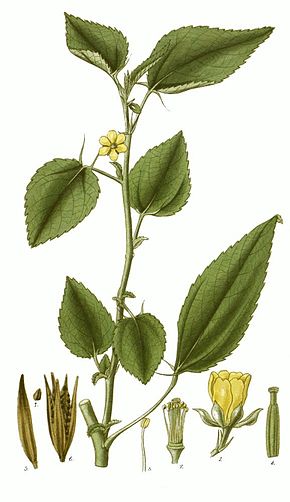
Mouloukhiya, that magic verdure, hated or loved across the shores of the southern and eastern Mediterranean, is an abundant green herb that often ends up in a stew with varying consistencies and a long history of conflict. We hear words in a multitude of dialects such as warak willa na’ma? (leaves or chopped) Basal o khal willa basal o leimoun? (onions and vinegar or onions and lemon?) ringing in conversations about this divine stew…but to the eyes of the uninitiated, mouloukhiya looks like a deep green stew that is viscous and many times repulsive. Why do we celebrate it to an extent that it becomes cult like!
We are taking you on a journey on the shores of the Mediterranean and beyond to explore the different traditions and relations to mouloukhiya. The voices of Nevine Abraham, Egyptian in Pittsburgh, Boutheina Bensalem, Tunisian in London and Ryoko Segikushi, Japanese in Paris join Chef Fadi Kattan, Palestinian in Bethlehem to take you on this mouloukhiya journey.
NEVINE—At 26, I made molokhia, my favorite childhood dish, for the first time by myself. And I let it boil and boil.
Until I left my parents’ house, I was a mere spectator and admirer of the females in my family, my nanny included, contending that they possess the secret to preparing the best molokhia. To them, “best” did not connote flavor but rather consistency, namely not allowing it to over boil so as not to let the chopped leaves drop in the bottom of the pot, a sign of a failed attempt per Egyptian culinary standards.
At least, this is what the Caireen females I knew had taught me. Until one day my Alexandrian mother-in-law watched attentively as I prepared it. “Let it boil. It must cook,” she told me. “Shouldn’t I …” “No, it must boil for a while.” A novice in the kitchen, I had to consent. The extra boil turned it deep green and less slimy and, to my surprise, it tasted as good as a short-boiled one. At this moment, I realized that debating its consistency constituted an integral part of the tradition of its preparation, at least in our household.
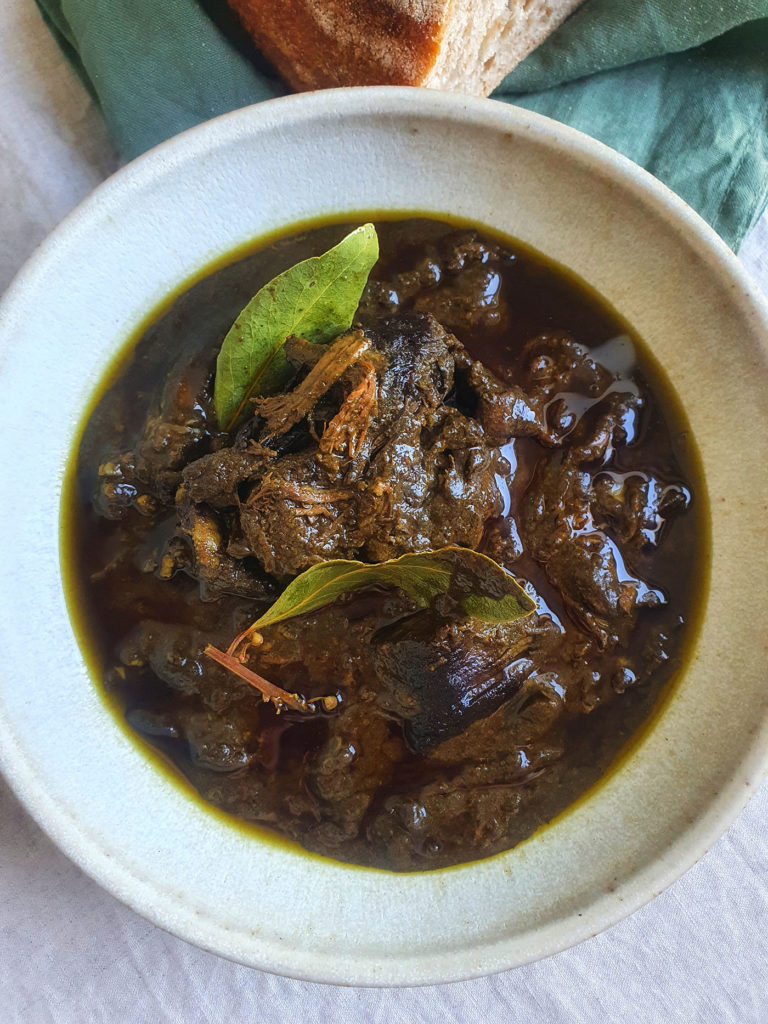
BOUTHEINA—In Tunisia the leaves are sun-dried and ground to a fine powder. The common rule is one spoon per person plus always an extra spoonful in case a guest shows up. Tunisian cuisine being a generous one, people usually add a lot of extra spoons to share with friends and neighbors.
Rather than a soup, Tunisian mouloukhya is prepared with olive oil to a thick sauce with chunks of beef meat or mutton and in some regions with camel meat.
The ingredients involved vary from region to region, from household to household but garlic, bay leaf and Tabel spices are the common ones. Some add artisanal harissa. In some places we still have the tradition of cooking mouloukhya over a kanun — clay brasero — which gives it an incomparable taste.
Once cooked it is served with preferably warm homemade bread flavored with nigella seeds and fennel seeds. The flavors are complex, the meat is tender and fondante. It is an incredible experience to have at least once in your life.
RYOKO—As surprising as it may seem, mouloukhiya exists in Japan too. Pronounced “moroheiya” with a Japanese intonation, it arrived in our country in the 1980s. I still remember the adverts praising it as “the secret of longevity and the favorite vegetable of Cleopatra”! And that is from the Japanese, who say we are the guardians of the secrets of long life…
This vegetable was very quickly adapted by the Japanese, who started cultivating it locally, and today we find it everywhere, even in supermarkets, at a very affordable price.
FADI—Across Palestine, mouloukhiya is prepared differently, from the chopped tradition served with rice to the whole leave tradition served with bread. Then come the subtilities, with meat? with chicken? with rabbit? And the fine details that are game changers, are the tashsha garlic or garlic and coriander; do you place a tomato in the stew to remove the viscosity or do you leave it? In Um Al Fahem, mouloukhiya is cooked whole and served with khobz, bread, to dip in; in Jericho, it is chopped and cooked with generous amounts of chili and garlic; in Jerusalem and Bethlehem, it is cooked either whole or chopped with lamb meat or chicken and served with chopped onion in vinegar and chopped onion in lemon juice.
And the essential question, do you cook mouloukhiya only in season? Do you dry it? Or do you succumb to modernity and freeze it? For me, the dry and fresh mouloukhiya are two different experiences, each rich in flavors and creating two different memories: one of the celebration of summer and the other, a winter stew cooked with a combination of the nostalgia of sunshine and the smell of the mouneh room (pantry where all produce were stored and where the smell of the dried mouloukhiya would reign).
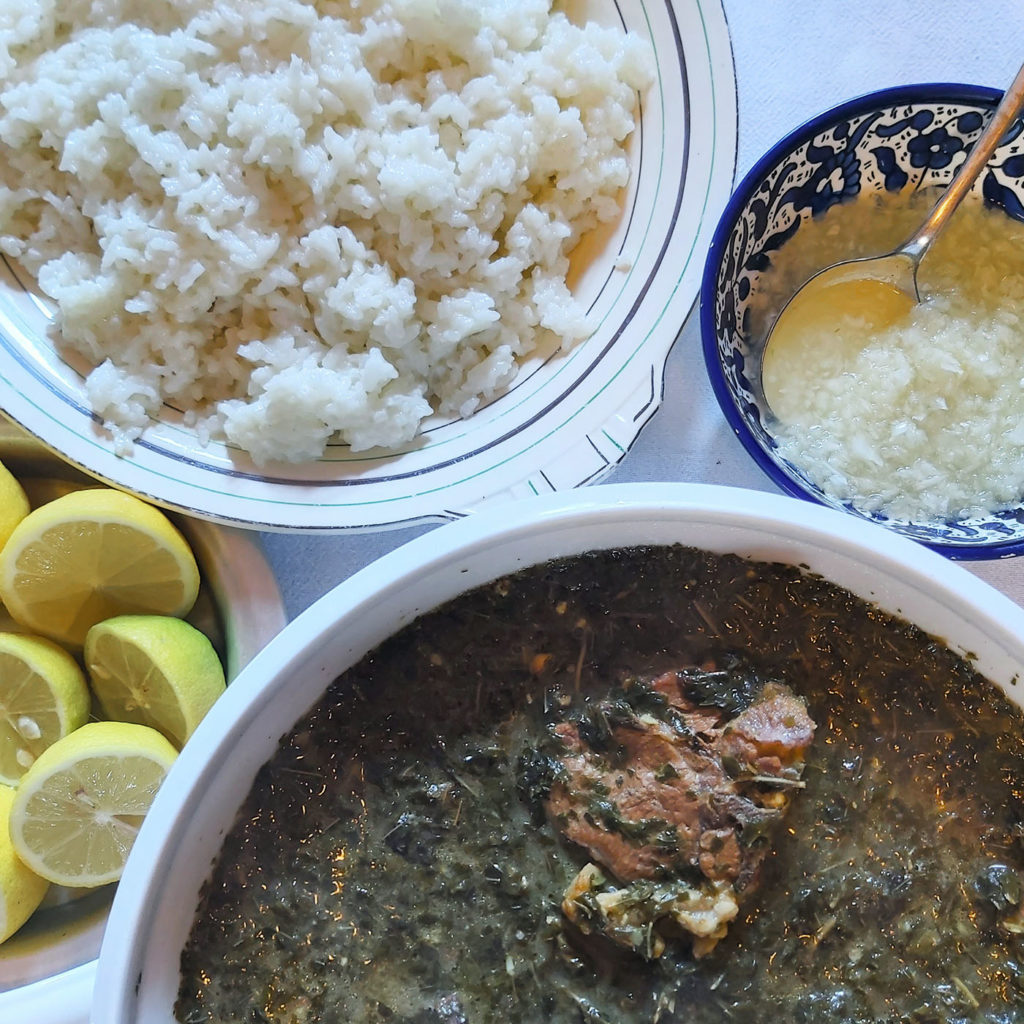
BOUTHEINA—The story behind Mouloukhya is full of legends, mysterious powers and a bit of magic. While the use of this vegetable in food preparation dates back to Ancient Egypt, the first description of mouloukhya as a miracle superfood fit for kings stems from a strange story rooted in the late 10th-century Fatimid dynasty.
Legend has it that a soup made of mouloukhya leaves nursed back to health an eccentric and cruel Caliph who then prohibited its consumption by the masses because of its supposed aphrodisiac properties. The Druze who believe that the Caliph is a divine reincarnation do not eat mouloukhya to this day.
Whilst the leafy plant was the prerogative of kings back then — the name originates from the arabic mulukia or “which belongs to the royals” — mouloukhya is nowadays a staple in many Middle East and North African cuisines.
NEVINE—There is more to coupling rice/freekah and bread with molokhia. It is a practice ingrained in the common Egyptian consumption of a high amount of carbohydrates, especially bread or aysh, due to its filling nature, which reflects the country’s socio-economy. The Egyptian government’s subsidy of aysh, synonymous for “to live,” alludes to its importance for the population’s livelihood. In a country where 26.1% earn $3.20 a day (2017-2018), locally-grown molokhia in the fertile Nile Valley and economic dishes like falafel, koshari, and foul medames are staples of Egyptian cuisine. Contrary to modern times, molokhia stands in ancient history as a royal dish, drawing to its Arabized name mulukiya or “royalty,” in reference to the pharaohs’ consumption of the plant, which some call “food of the kings” due to its “curative powers.” Fatimid Caliph Al Hakim Bin Amr Allah’s (996-1021) edicts and bans on certain foods included the green plant in 1004 either because of its claimed aphrodisiac effect (as it increases the blood flow) or because he loved it too much that he wanted to keep it to himself. Some sources assign molokhia an even more diverse background: according to The Oxford Companion to Food, “it is sometimes called Jew’s mallow,” alluding to the Egyptian Jews’ consumption of the mallow plant mentioned in the Book of Job. Minority Copts adopted the gambari (shrimp) bil molokhia version to their fastings that allow seafood.
RYOKO—It has been more than 30 years that moroheiya is part of our vegetables. We often prepare it Japanese style: we blanche it, place it over a bowl of rice, and pour a bit of soja sauce or some dashi. Its viscous texture does not bother us as not foreign to Japanese cuisine: natto (fermented soja), ground yam… We may even say that it is thanks to this elastic texture that mouloukhiya is liked by the Japanese.
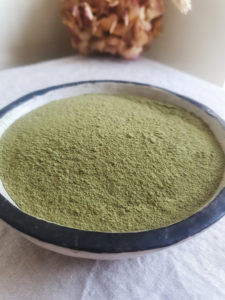
FADI—When I remember mouloukhiya, I have this memory of a dark room where I could smell the dried mouloukhiya but I still cannot remember if it was in Sido Nakhleh’s house or Teta Julia’s house, or maybe both. And yet I remember the serving of the mouloukhiya, in a celebratory ceremony, with the right soupière for the stew, the long dish for the rice, the small bowls for the toppings and then the soup plates, the generous spoons and then the happy headshake from everyone around the table when asked if they wanted seconds. I also remember Khadra, a woman who worked at my grandfather’s place, sitting with my great aunts Victoria and Regina, cleaning the mouloukhiya off its stems, on the terrace overlooking Bethlehem. I also remember when my aunt May, from Gaza, taught me the love of green chilies, served next to the mouloukhiya and the sound of the crunching when you bite into one, the mixture of flavors, the quite earthy mouloukhiya, the rice, the acidity of the lemon and the vividity of the chili scent. As much as I enjoy cooking mouloukhiya, I have to confess, that when I want to enjoy mouloukhiya, I ask my mother to prepare it. Her mouloukhiya renders the initial Arabic sense of a royal dish to the utmost, the fresh coriander and the garlic, the fried bread, the wise dosage of the stew, is like no other.
BOUTHEINA—In Tunisia mouloukhya leaves live up to their name and are indeed the Queen specialty of Tunisian gastronomy.
There is a tangible feeling of magic in the air surrounding mouloukhya in Tunisian food culture. Traditionally prepared on the first day of the new year, Rass al ‘Am, it is indeed believed that it will bring abundance, prosperity and good fortune. Mouloukhya is a very special dish cooked to celebrate happy events (farah), may it be a newborn or a promotion. Mainly cooked for special occasions only and from time to time when she is missed, mouloukhya is as refined as revered by Tunisians.
The rituals around the cooking itself are quite mysterious. The skills and experience of the cook matter of course to master this dish of connoisseur. There are other forces at play, elusive ones.
It is believed that the evil eye ruins the dish. So one of the golden rules is that once you put the lid on “she” must remain undisturbed during cooking time, checking it as little as possible.
FADI—Used to our Palestinian mouloukhiya and its declinations, I have to admit, the first time faced with a Tunisian plate of mouloukhiya, I was dumfounded. Silence! Looking into this thick dark soup and trying to understand! I had seen variations, the Sudanese version, quite close to the Egyptian but served with an unleavened bread, the Nigerian Yoruba version, Ewedu, cooked with crayfish and served with fufu, or the Haitan Lalo, cooked with pork and served with rice. None differed as much as the Tunisian mouloukhiya. I looked into that plate served by a Parisian family originally from Tunisia, until the elderly father laughed and asked if I was looking for the leaves!
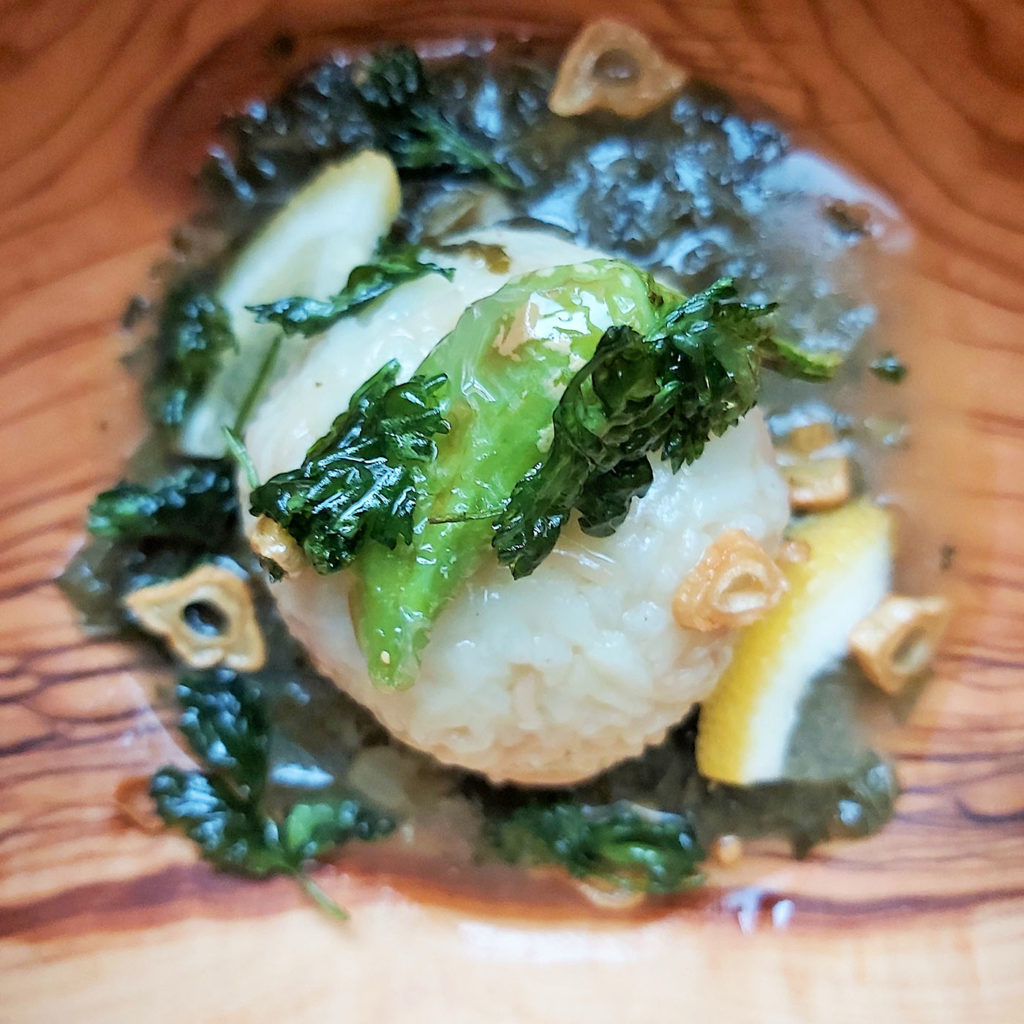
BOUTHEINA—A Tunisian cook is always reluctant to show her mouloukhya while it’s cooking. Also, I have always been told by my elders that mouloukhya preparation should only involve one cook. “Too many hands involved in the cooking will spoil it,” “she doesn’t like it.” I once asked my grandmother how the rules apply to the teaching process, which involves many hands and many eyes. Her answer was even more elusive and mysterious than the rules themselves: if the apprentice has Nafas* the mouloukhya will be good anyway.
Whether or not there is magic involved in the cooking is up to debate, mouloukhya remains nonetheless a capricious dish that requires four to six hours of simmering on low heat — the epitome of slow food. The right cooking requires some knowledge and a great deal of experience. Anyone can follow a mouloukhya recipe, while only great cooks make a masterpiece of it.
NEVINE—The preparation and consumption of this simple green soup invigorates many senses. The visual of the artful mastery of women chopping the green leaves, after removing the stems, in a lateral, feminine swinging, holding the two handles of makhrata — from the Arabic root “kh r t” or to “shred” or “mince”; the sound of tashsha, a mixture of sautéed garlic and coriander and an onomatopoeia that owes its name to the tshhhh sound it produces as it drops into the soup; its aroma lingering at home for hours; and its savoriness when dipping a lou’ma of baladi bread shaped like widn el otta or “a cat’s ear” to scoop up as much flavor for the palate as possible.
Molokhia revives many good memories thanks to the women in my family who excelled at rendering it a favorite. Reflecting back on my younger years in Cairo, I remember it as a symbol of agency, of my existence in a household of five, including exhausted parents, who worked full time. Desperate to get me, a child with rare cravings, to eat, my mother would ask me every Thursday what to make for our main meal on Friday. Intrigued by the privilege of deciding for my family the dish they would eat on our weekly holiday, molokhia was my consistent, incontestable choice. Often served as a trio with vermicelli rice and chicken —or sometimes rabbit or shrimp for an alternative gourmet twist — or chicken stuffed with freekah, it was enticing for me to mix the soup with the starch and protein for a tasty one-meal bowl that is easy to swallow as it imparts a mucilaginous consistency.
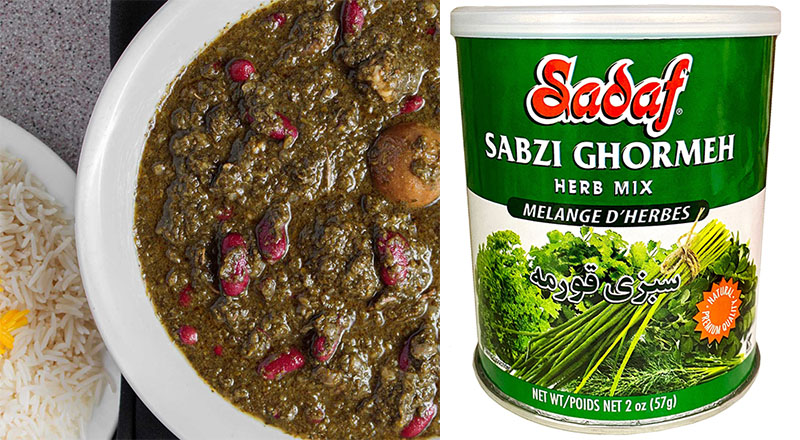
RYOKO—Many other recipes exist in Japan: In a miso soup, in some gyôza, on a bowl of soba noodles, sauteed in sesame oil, on a bit of tofu, with salted uméboshi prunes, in tempura… I would love to know what Lebanese, Palestinians or Egyptians would think of our “moroheiya,” that adapted well to Japanese life !
FADI—As a chef re-thinking Palestinian cuisine and focusing on highlighting local produce in untraditional methods, the plethora of preparations for mouloukhiya challenges me to explore its texture and the possibilities. The simplest game changer was frying the fresh leaf in a shallow hot oil bath and serving it as chips, with a dash of salt or with a dip made of the traditional vinegar and onion but whipped into a creamy consistency, a bit like an onion and vinegar mayonnaise. But my favorite is based on a traditional mouloukhiya recipe, where I create a rice ball stuffed with a bit of mouloukhiya and meat and serve it on a small portion of the stew, infused with lemon and vinegar and top it with fried fresh cilantro and garlic, a bite sized Loukmet Mouloukhiya!
NEVINE—Today, the Egyptian traditional process of preparing molokhia is no longer static. With modernization forcing many dishes to evolve and due to the increasing female participation in the labor force, most Egyptian women now purchase frozen chopped leaves of molokhia, rendering nostalgia and adherence to tradition the only reasons for which a few still (occasionally) opt to chop it fresh. Meanwhile, the internet that has bridged Arab societies led many Egyptians to mimic neighboring cuisines’ non-soup approach that dries the fresh leaves and mixes them with diced tomatoes for extra tanginess.
As an Egyptian in the diaspora, no dish transports me back into our home in Cairo like molokhia. Did I succeed in preserving its traditional preparation method? Perhaps not entirely, according to the cooking standards of the females in my family. I recently prepared it and shared a photo with my nanny in Egypt. “But you made it drop!” Her response was expected and humorous. Neuroscience proves that “smell and memory seem to be so closely linked because of the brain’s anatomy.” This holds true to me: I make molokhia not to perfect its consistency but because my memory is mostly intertwined with the aroma of tashsha that brims over and revives emotions.
The magic of mouloukhiya resonates across the world, in kitchens at home and in restaurants, bringing up celebrations of seasons and mystical magic rituals, championed for its taste, for its benefits and for the comfort it brings in one’s nostalgia. If you have not tried yet, head to any store that sells it and start cooking!
* “Nafas,” says Fadi, “is a magic, nearly untransatable word, a combination of breath, hospitality, desire for food, and will it please the people eating the dish, via the talent, mastery and a mystical power grandmothers possess!” Adds Nevine, “Nafas is what Arab women claim to be — having the secret or elusive gift that they possess that enables them to make a delicious dish, that is, the passion for cooking, the patience while cooking…its literal translation is ‘breath, as Fadi pointed out.”



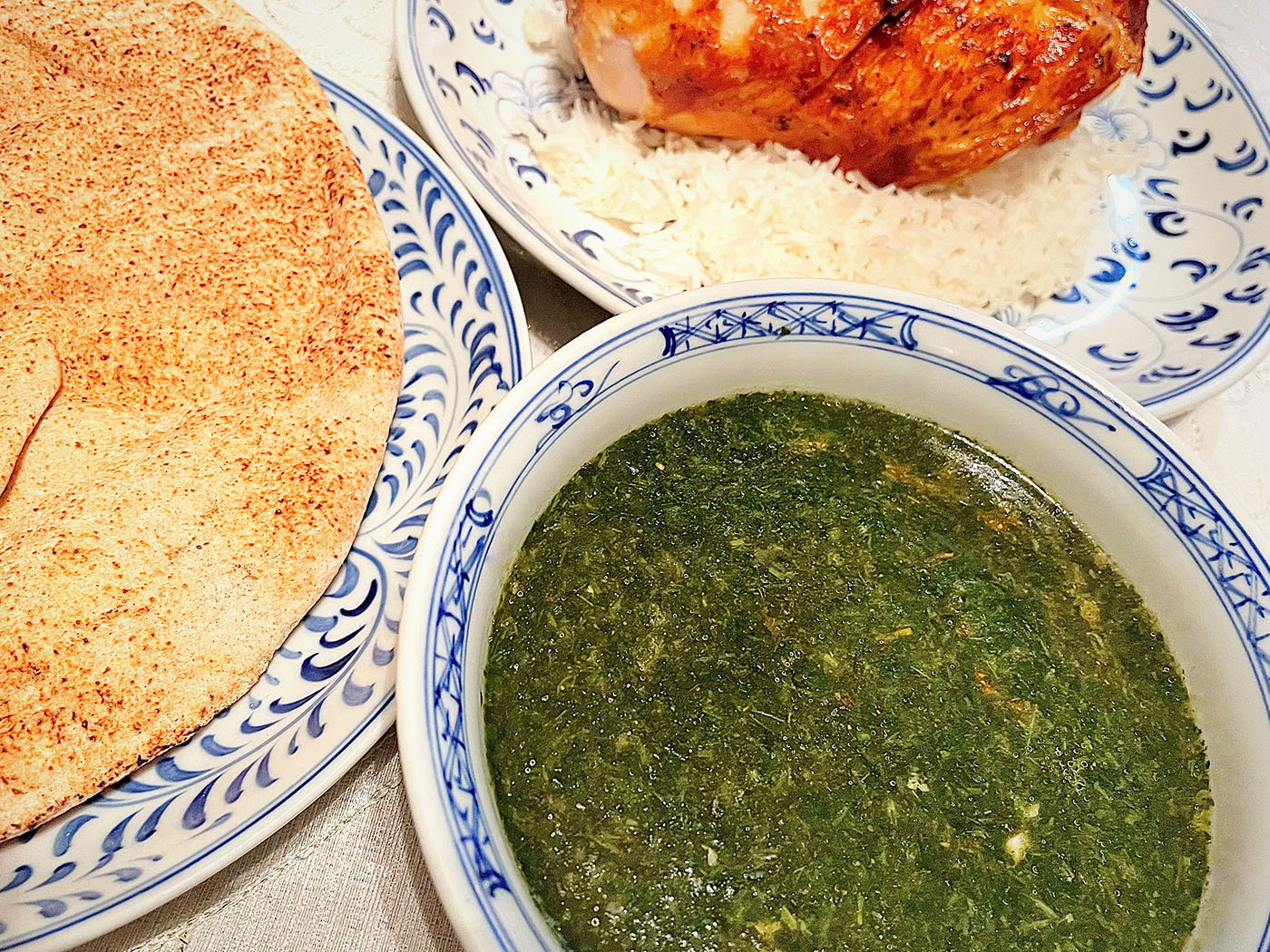

My Egyptian mother used to fry lots and lots of garlic in butter to add to her hot molo stew. We now call the dish in Canada simply Molo, easier to explain.